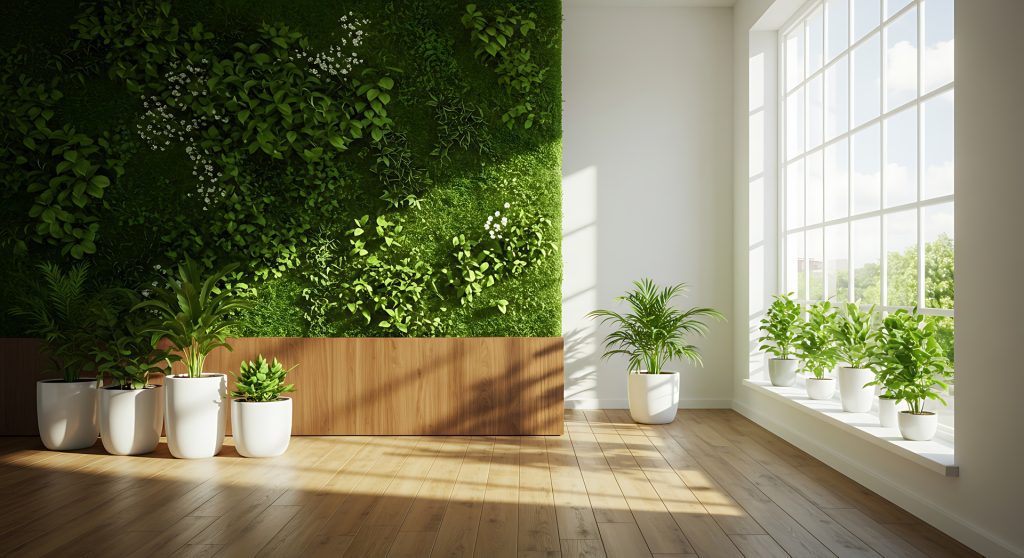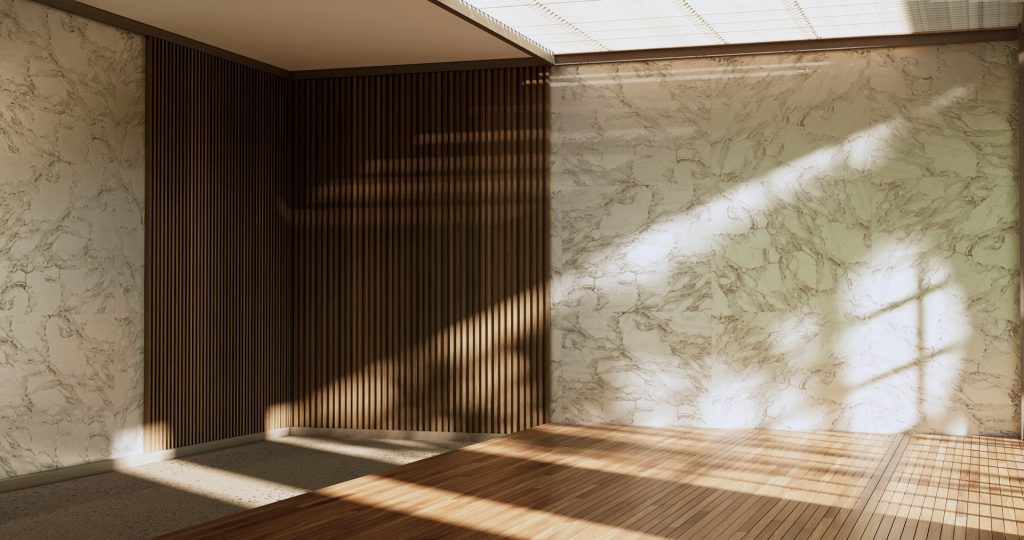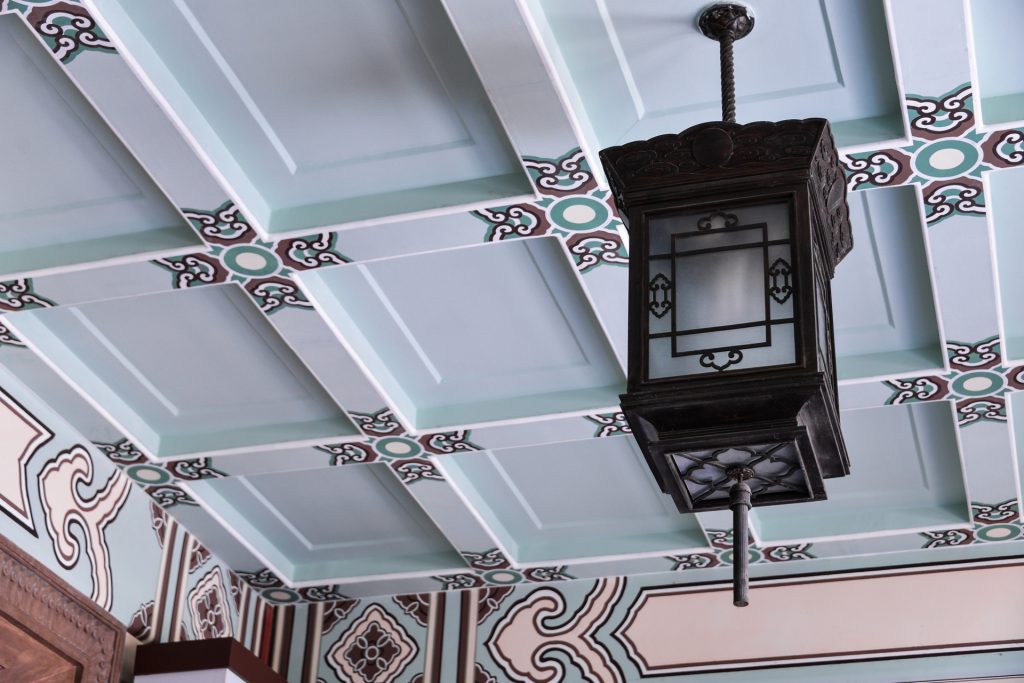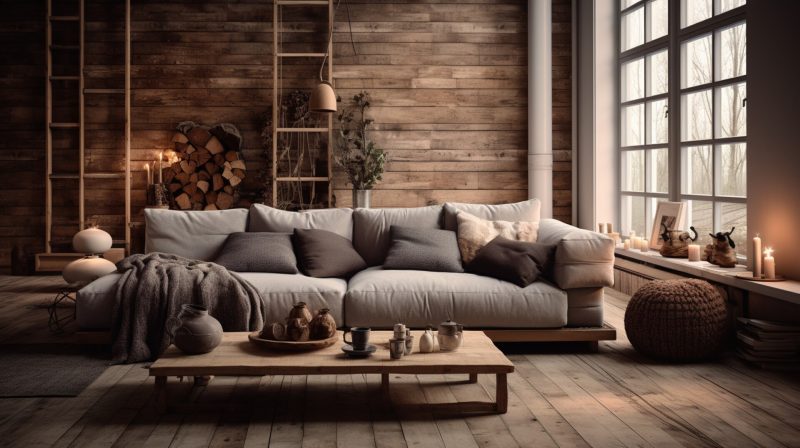As Denver continues to evolve with its booming housing market, vibrant culture, and scenic surroundings, interior design in 2025 is embracing a style that’s both grounded in nature and forward-thinking in function. From sleek sustainability to cozy minimalism, Denverites are mixing urban sophistication with mountain charm in bold, thoughtful ways. Whether you’re renovating a Wash Park bungalow, outfitting a LoHi loft, or furnishing a modern build in Stapleton, these top trends are shaping how Denver lives – and lives beautifully.
Here are the biggest interior design trends transforming Denver homes this year.
1. Mountain Modern Revival
The classic “mountain lodge” aesthetic has long been popular in Colorado, but in 2025, it’s getting a fresh, refined twist. This year’s Mountain Modern trend honors the natural beauty of the Rockies while embracing a cleaner, more sophisticated design language. Instead of heavy log cabin looks and dark finishes, homeowners are opting for lighter wood tones like white oak and ash, mixed with sleek black accents and simple geometric forms. It’s a look that feels rooted in nature, yet effortlessly contemporary.
Architectural features play a key role in this revival. Open-concept living spaces with vaulted ceilings, large windows, and exposed beams help bring the outdoors in. Fireplaces are becoming focal points again, often finished in concrete, steel, or stacked stone for a modern edge. Paired with minimalist lighting and organic textures – think wool throws, linen curtains, and handmade ceramics – the overall vibe is warm, grounded, and elevated. It’s rustic reimagined for today’s design-savvy homeowner.
This style also lends itself perfectly to Denver’s love for indoor-outdoor living. Homes are being designed with seamless transitions to patios, decks, and rooftop spaces, often using sliding glass doors and natural stone pavers. Whether in a foothills retreat or a centrally located townhome, Mountain Modern design offers the best of both worlds: the serenity of nature and the sleekness of urban style. It’s a timeless trend redefined to fit Denver’s modern mountain lifestyle.
2. Sustainable, Smart Materials
In 2025, sustainability isn’t just a design preference – it’s a lifestyle choice. Denver homeowners are placing greater importance on using eco-friendly, responsibly sourced materials throughout their homes. Natural surfaces like bamboo, cork, and reclaimed wood are trending not just for their aesthetics, but for their low environmental impact. Even countertops are getting an upgrade, with recycled glass and concrete composites replacing quartz and granite in many remodels. Flooring made from sustainable hardwoods or durable linoleum is also making a comeback, especially in high-traffic areas.
Beyond materials, sustainability is being integrated into every layer of home design. Many new builds and remodels are incorporating passive solar principles, better insulation, and non-toxic finishes to reduce energy use and improve indoor air quality. Water-saving fixtures, low-VOC paints, and smart irrigation systems are no longer niche upgrades – they’re becoming standard for environmentally conscious households in Denver. Even furnishings are shifting, with more people opting for secondhand, upcycled, or ethically made pieces instead of mass-produced decor.
Technology is playing a huge role in this movement as well. Smart home systems in 2025 go beyond convenience – they actively help homeowners monitor and reduce their carbon footprint. Automated thermostats, energy-efficient lighting, solar panel integration, and smart appliances all work together to create a home that’s both efficient and intuitive. The result is a space that’s not only stylish but forward-thinking – a perfect match for Denver’s eco-aware, innovation-driven community.
3. Biophilic Design & Indoor Greenery

Biophilic design – an approach that emphasizes a deeper connection to nature – has taken root in Denver homes and continues to flourish in 2025. It goes far beyond placing a few houseplants near a window. Homeowners are thoughtfully integrating natural elements throughout their spaces, using materials, textures, and colors that mimic the outdoors. Wood paneling, stone accents, and organic textiles like jute and wool are being used to create earthy, tactile environments that promote comfort and well-being.
Indoor greenery plays a starring role in this trend. From vertical gardens and potted herb walls to cascading vines and oversized planters, plants are being treated as essential design components rather than afterthoughts. Popular choices include low-maintenance favorites like snake plants, pothos, and ZZ plants, as well as statement greenery like fiddle-leaf figs and olive trees. Some homeowners are even designing entire rooms, such as sunrooms or breakfast nooks, around natural light and foliage, creating calming, restorative spaces within their homes.
Natural light itself is considered a core element of biophilic design. In 2025, Denver homes are embracing skylights, large picture windows, and glass sliders to maximize sunlight and blur the boundaries between indoor and outdoor living. Soft, earthy color palettes, like sage green, terracotta, sand, and stone, reinforce this nature-first approach. With its stunning outdoor landscapes and wellness-focused culture, it’s no surprise that Denver is leading the way in creating homes that feel as refreshing as a walk in the woods.
4. Moody Color Palettes with a Western Twist
In 2025, Denver homeowners are stepping away from all-white interiors and leaning into richer, moodier color palettes that bring drama and depth to their spaces. Shades like charcoal, deep navy, forest green, and even espresso brown are finding their way onto walls, cabinetry, and furnishings. These colors create a sense of intimacy and coziness, perfect for Denver’s cool evenings and long winters. Matte finishes are especially popular, adding a velvety texture that enhances the depth and sophistication of these tones.
What makes this moody look uniquely Denver is its fusion with warm, Western-inspired accents. Rich leathers, terra cotta tiles, and sunbaked hues like rust, ochre, and burnt sienna are used to balance the darker base tones and infuse spaces with a welcoming, lived-in vibe. Homeowners are incorporating details like Navajo-style textiles, vintage desert photography, and handmade pottery to create interiors that feel grounded in place and connected to Colorado’s broader Southwestern heritage.
These bold palettes also lend themselves well to layered design. A deep green accent wall might be paired with brass fixtures, a reclaimed wood coffee table, and textured textiles in neutral tones to keep the space balanced. Whether used in a dramatic powder room, a cozy bedroom retreat, or an edgy kitchen design, moody hues with a Western twist are helping Denverites express their individuality while staying rooted in the colors of the landscape that surrounds them.
5. Mixed Materials & Eclectic Personalization

In 2025, uniformity is out, and individuality is in. Denver homeowners are embracing mixed materials as a way to inject personality and contrast into their interiors. Rather than sticking to a single design style or matching sets, people are blending materials like marble and wood, brass and concrete, velvet and rattan to create spaces that feel layered and dynamic. This tactile approach not only adds visual interest but also highlights the craftsmanship and authenticity behind each piece.
The mixed-materials trend goes hand-in-hand with a growing love for eclectic personalization. Instead of cookie-cutter furniture and mass-market decor, Denverites are curating spaces that reflect their travels, stories, and values. Vintage finds from local flea markets, heirloom furniture, globally inspired textiles, and handmade art are becoming essential design elements. These personal touches make homes feel warm, lived-in, and unique, each room telling its own story through an intentional blend of old and new.
This approach especially resonates with Denver’s creative, outdoorsy spirit. It’s not uncommon to see a modern dining table paired with mid-century chairs and a Native American woven rug underneath, or a minimalist kitchen accented by rustic open shelving and handmade ceramic pieces. The key is cohesion through contrast, carefully choosing textures and tones that complement one another while allowing for individuality. In 2025, design isn’t about following one rule – it’s about confidently breaking a few to make your space truly yours.
6. Cozy Minimalism
Minimalism continues to thrive in 2025, but it’s evolving into something warmer, softer, and more inviting, especially in Denver homes where comfort is key. Rather than stark, cold spaces with sharp edges and monochrome palettes, cozy minimalism focuses on restraint without sacrificing warmth. The emphasis is on quality over quantity: fewer pieces, but each one thoughtfully chosen for its form, texture, and purpose. Neutral tones like cream, sand, and taupe are paired with natural materials like wood, linen, and boucle to create spaces that feel serene yet lived-in.
This trend is especially appealing in urban areas like LoHi or Capitol Hill, where space may be limited. Homeowners are embracing streamlined furniture with hidden storage, multifunctional pieces like modular sofas and ottomans, and open layouts that maximize light and flow. Clean lines and clutter-free surfaces help promote a sense of calm, while layered textures, such as plush rugs, knit throws, and soft lighting, add warmth and personality without overwhelming the senses.
Cozy minimalism aligns perfectly with Denver’s laid-back, wellness-oriented lifestyle. It promotes mindfulness through design, encouraging residents to be intentional about their surroundings and prioritize comfort, simplicity, and emotional ease. Whether you’re curling up with a book by the fire or hosting friends in an uncluttered yet inviting living space, this style creates a peaceful environment where both form and function are in perfect harmony.
7. The Return of the Statement Ceiling

In 2025, the ceiling is finally getting the attention it deserves. No longer just a blank canvas overhead, ceilings are becoming a bold design feature in Denver homes. From painted treatments in deep, dramatic hues to textural elements like wood slats, tin tiles, or plasterwork, ceilings are now playing a major role in defining a room’s personality. This upward shift in focus is especially impactful in open-concept spaces, where a unique ceiling treatment can visually separate areas without adding walls.
Homeowners are using statement ceilings to introduce pattern, texture, or contrast in otherwise understated rooms. For example, a bedroom with a soft neutral palette might feature a ceiling in dusty blue or a subtle botanical wallpaper to add depth and intimacy. In kitchens and dining areas, tongue-and-groove paneling, coffered designs, or exposed beams bring warmth and architectural interest. Even ceilings painted the same color as the walls, a trend known as “color drenching,” are adding drama and cohesion to modern interiors.
This trend feels right at home in Denver, where creativity and craftsmanship are highly valued. With the abundance of natural light in many local homes, bold ceiling choices don’t overpower – they enhance. Whether it’s a cozy bungalow or a modern townhome, adding detail to the fifth wall helps elevate everyday living spaces, making rooms feel more curated, complete, and unforgettable from every angle.
8. Warm Metallic Accents
In 2025, metallic finishes are stepping out of their traditional roles and becoming warm, inviting accents that add depth and sophistication to Denver interiors. Brass, bronze, and copper are especially popular, replacing the cooler chrome and stainless steel tones of previous years. These warmer metals bring a subtle glow and a touch of vintage charm, perfectly complementing the city’s mix of historic architecture and modern design.
Homeowners are incorporating warm metallics in unexpected ways, from lighting fixtures and cabinet hardware to furniture legs and decorative accessories. A matte brass chandelier can transform a dining room, while copper sinks and faucets add luxury to kitchens and bathrooms without feeling ostentatious. These metals pair beautifully with natural materials like wood and stone, reinforcing the organic, mountain-inspired vibe that Denver embraces.
What’s exciting about this trend is its versatility. Whether your style leans toward sleek modernism, rustic farmhouse, or eclectic boho, warm metallics offer an easy way to inject character and polish. They catch the light in inviting ways, create visual interest through texture, and add a layer of timeless elegance that can evolve with your home for years to come.
Designing Denver Homes in 2025
Denver’s 2025 interior design trends capture the city’s unique blend of mountain calm and urban energy. From warm, natural textures and sustainable materials to cozy minimalism and bold colors, these styles emphasize comfort, authenticity, and connection to nature. Homeowners are creating spaces that feel personal and inviting while embracing innovation and thoughtful design.
The common thread across these trends is balance – between indoors and outdoors, tradition and modernity, simplicity and warmth. Whether through smart technology, statement ceilings, or abundant greenery, Denver homes are designed to nurture and inspire. As the city grows, its interiors will continue to reflect its vibrant, evolving spirit, offering a perfect blueprint for creating homes that truly feel like home.
